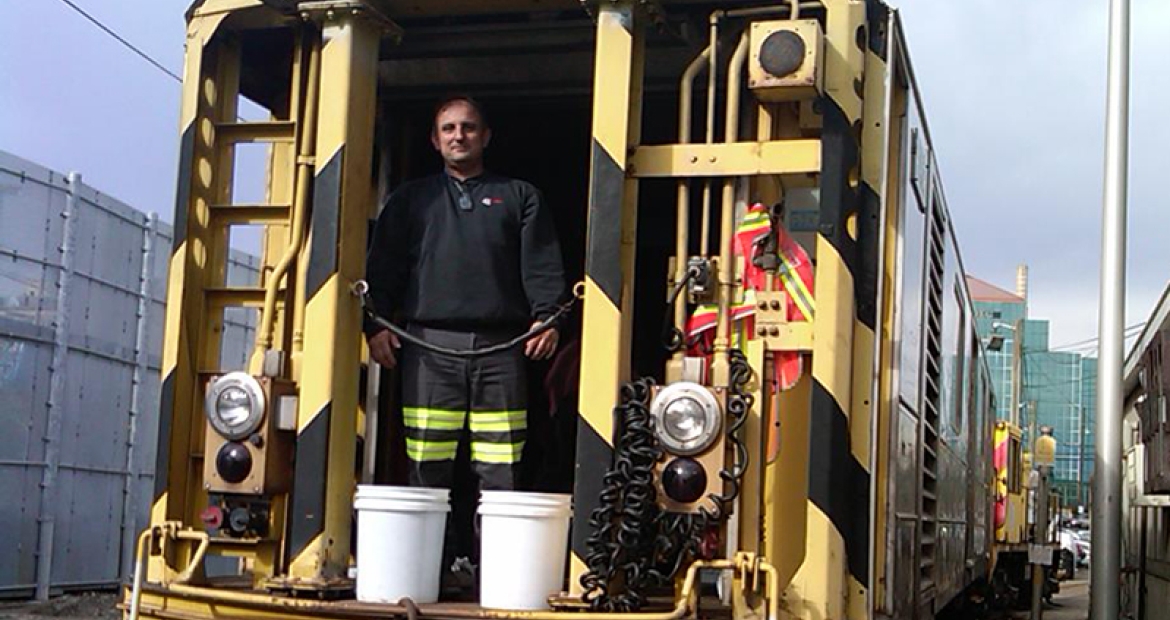Cummins Employees Put Customers First in Sandy’s Aftermath

Three hours later, he was back working the phone again, trying to find generators for desperate customers in New York and New Jersey left powerless by the mammoth storm.
"You just gotta try to help everyone you can," said Philips, General Manager - Rental Power for the New York district. He knew first-hand how his customers felt. The power was out at his home and his office was underwater at Cummins Power Systems in Newark, N.J.
Philips wasn’t the only Cummins employee who lost sleep over the past three weeks because of Sandy. Technicians in the region slept on cots at customer locations next to the generators they were monitoring on a 24-hour basis.
Warehouse and service personnel worked long hours to clear debris to get their operations up and running as quickly as possible after the storm. Office personnel like Philips remained in contact not only with customers but with their fellow employees to try and solve customer problems.
Power Generation Service Manager Chris Edwards, for example, would drive from his dark home until he could find cell phone service and work from his car for hours because the Newark offices were flooded by 4 to 5 feet of water.
Before the worst was over, nearly 400 pieces of Cummins Power Generation equipment were operating in the region, collectively deploying nearly 30 miles of cable and generating more than 200 megawatts of power.
In many cases, a single piece of equipment changed hands three times after the storm hit. As regular power was restored, equipment was moved to other areas without electricity.
“So many of our employees were thinking of our customers first at a time when many of them had significant concerns in their own lives,” said Scott Patrohay, President – Cummins Power Systems, LLC, based in Bristol, Penn. “I couldn’t be prouder of them or more grateful for their tremendous effort.”
Super Storm Sandy battered the New Jersey coastline Oct. 29 with 80 mph winds, pushing a 13-foot surge of sea water toward New York City that flooded subway tunnels, the underground electrical systems that power Wall Street, and much more.
More than 100 people died in the storm, which caused an estimated $50 billion in property damage and economic losses. More than 6 million people in the storm's path lost power and thousands were still without electricity last week.
Cummins distributors quickly mobilized their fleets of rental generators from across North America to help out, joining hundreds of other Cummins powered generators owned and operated by many of the country’s largest rental companies, said Scott Strudwick, Cummins Business Director – Global Rental Segment.
Scott Patrohay, President – Cummins Power Systems, LLC, points to the water line on a Cummins truck caught in the flood waters at the Newark facilities.
The supply of generators shipped in from distributors outside the region was critically important because Philips and other Cummins distributors in neighboring areas had rented out most of their equipment in anticipation of the storm.
While the rental power played a vital role in the storm response, Cummins employees contributed in a variety of other ways.
For example, technicians worked on the engines that powered the three New York City Transit Authority Pump Trains, each capable of pumping out thousands of gallons of water per minute from flooded subway tunnels.
One of the trains was out of service the Friday before the storm. Realizing every pump train would be needed as storm predictions grew increasingly dire, the transit authority called Cummins Power Systems' Bronx Engine Service Support Team for help.
A short while later, a technician was on the scene and diagnosed the problem. Working with his team back in the office, he was able to get the right part and the engine was fixed and back in service two days before Sandy hit.
The pump trains would then operate nearly nonstop for the next 10 days, playing a key role in getting most of the subway system up and running within a few days after the storm. The subway system serves about 4 million passengers per day in the New York City area.
"It was much, much needed," Vince Carderi, superintendent of the transit authority's rail yard, said of the repair to the broken pump train. "I'm very grateful they responded so quickly to our last minute request for help."
The Cummins team across the region helped provide power to hospitals and nursing homes, 911 emergency centers, data centers, water and sewer plants, food distribution locations, pharmaceutical companies and even the New York Aquarium in Brooklyn.
While conditions are improving, it will be a long time before life returns to normal for Cummins employees like Philips. He'll be working out of a trailer for the next several months before the offices at the Newark facility are fully repaired.
"Last night was pretty good," he said when asked last week about his sleep patterns recently. "I got about five hours of sleep. But the phone still never stops ringing."
Related Tags